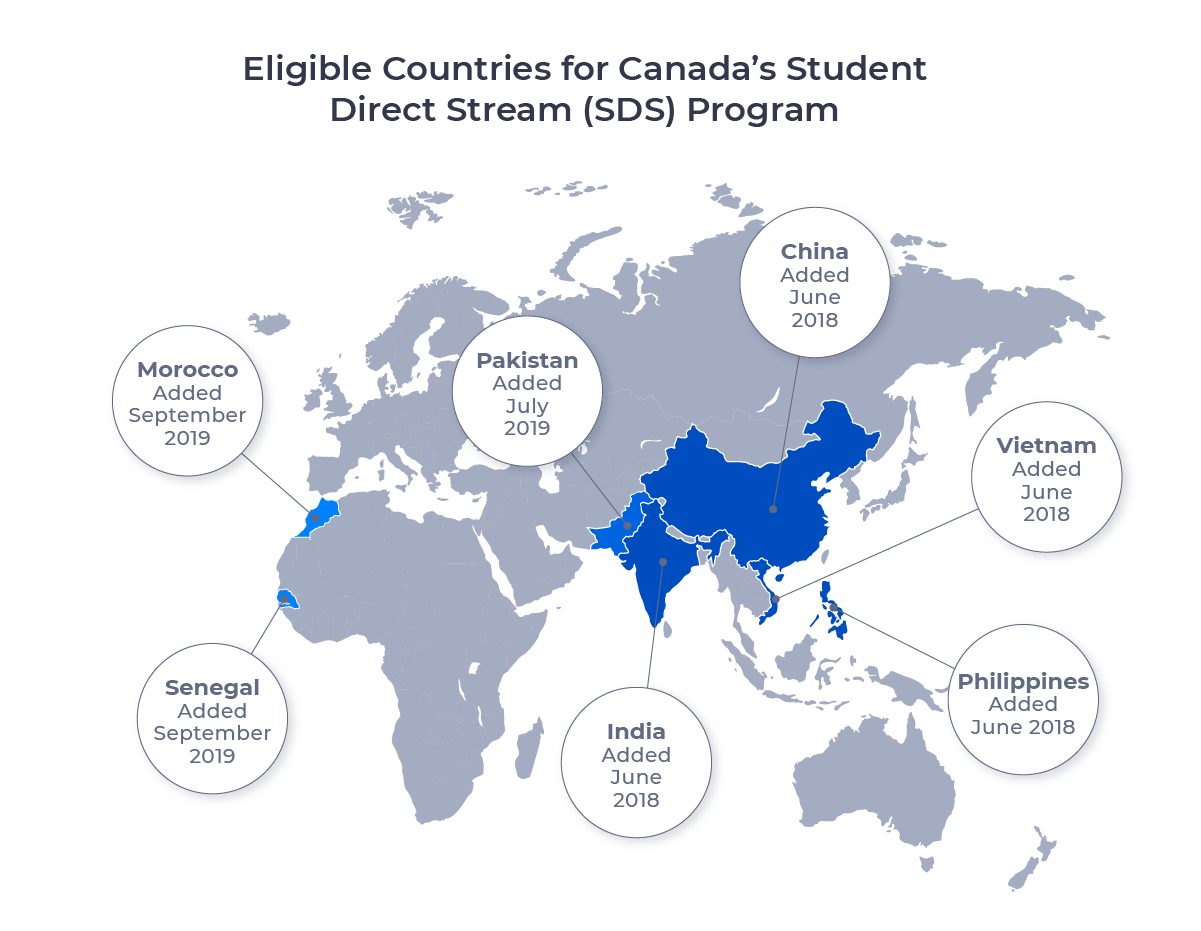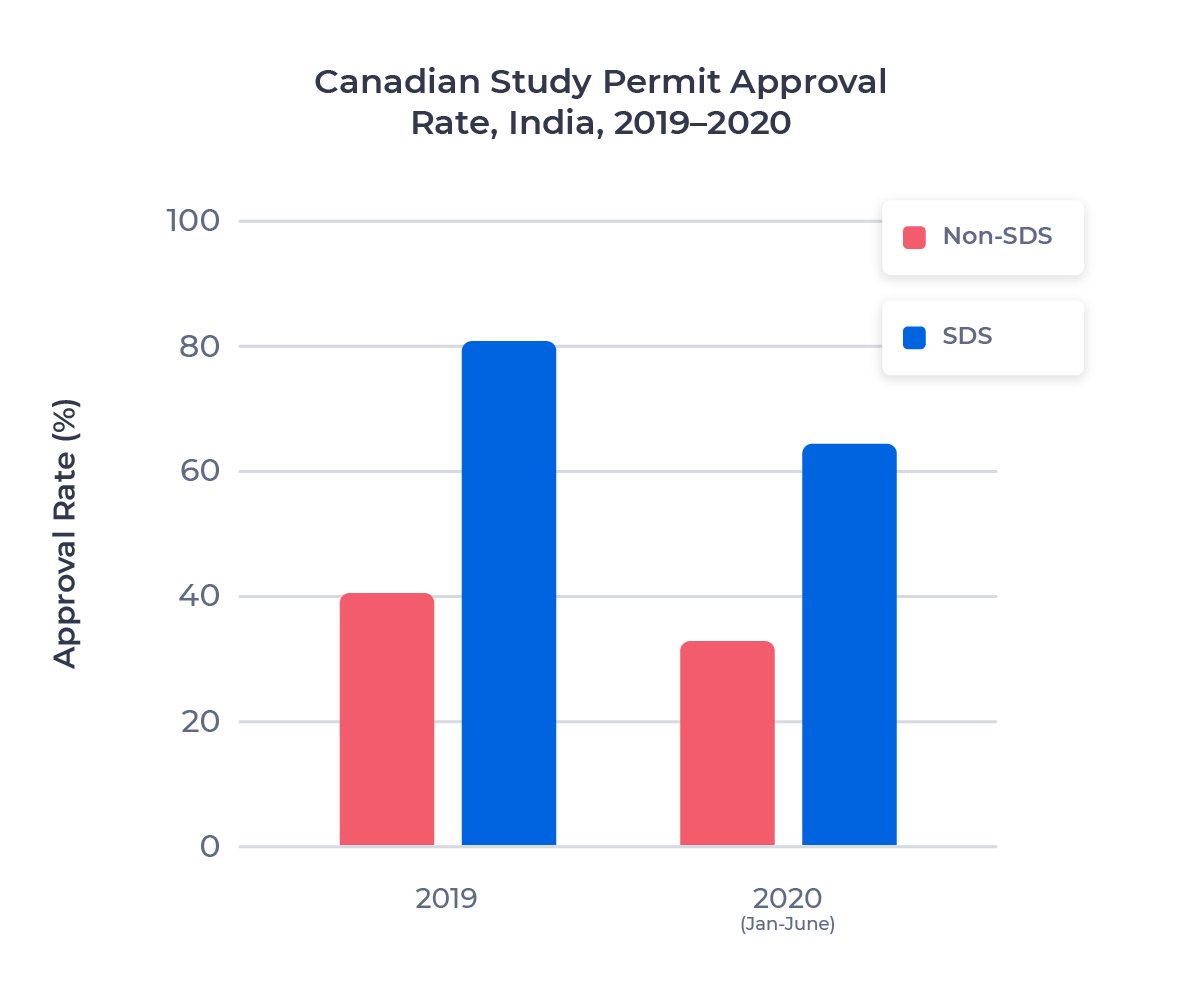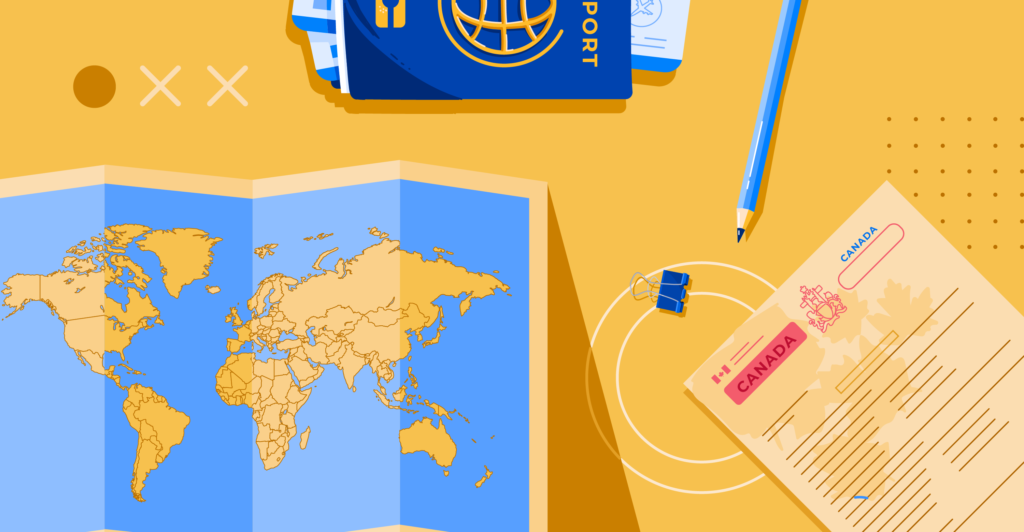In today’s ApplyInsights, I’ll be digging into some data on Canada’s Student Direct Stream (SDS), a government program that allows eligible international students from select countries to expedite the processing of their Canadian study permit. In particular, I’ll be looking at how study permit approval rates for the SDS program compare to approval rates for the regular study permit application process.
Here’s what this blog post will cover:
- What countries are eligible for the SDS program
- Study permit approval rates for Indian students applying through the SDS program and the regular stream for study permit processing
- How SDS and non-SDS approval rates for Indian students changed between 2019 and the first six months of 2020 (the latest data available)
- A breakdown of SDS and non-SDS approval rates for Indian students by study level (college vs. university) and program (bachelor’s, master’s, etc.)
- Some thoughts from Hari Ghai, ApplyBoard’s Senior Immigration Consultant and a Regulated Canadian Immigration Consultant (RCIC), on when Indian students should apply through SDS versus the regular stream
SDS is only available for post-secondary students applying to a designated learning institution (DLI). Applicants must meet a series of criteria to be eligible for SDS processing. However, Immigration, Refugees and Citizenship Canada (IRCC) processes most applications within 20 calendar days if the eligibility criteria are met.
For more information on SDS, check out our guide to the program.
Countries Eligible for the SDS Program
The map below highlights the seven countries whose residents can apply through SDS, along with the year and month those countries were added to the program: 
SDS and Study Permit Approval Rates – India
India is Canada’s largest source market for international students. 77,140 Indian citizens applied for a study permit through the SDS program last year. In fact, Indian students accounted for 95.4% of all SDS applicants. In 2019, 54.4% of study permits issued to Indian students were issued under the SDS program.
The chart below shows the difference in approval rates for students who applied through the SDS program and students who applied through the regular stream: 
The pandemic severely curtailed the number of study permit applications from all countries in 2020. There was also a general decline in study permit approval rates during the first two quarters of 2020. This was due in part to the difficulty students had in obtaining the necessary documentation with lockdown protocols in place to combat the COVID-19 pandemic.
We see this decline in both the SDS and non-SDS rates for India, which fell 15.9% and 7.6%, respectively, over the period. As a result, that two-to-one relationship essentially held, with SDS students approved at a 64.5% clip versus 33.1% for non-SDS students.
SDS vs. Non-SDS Approval Rates by Study Level
In 2019, SDS approval rates for Indian students were roughly 35 to 45% higher than non-SDS rates across study levels, with two big exceptions for university applicants:
| Program | Non-SDS Approval Rate | SDS Approval Rate | Difference |
|---|---|---|---|
| Bachelor’s | 41.6% | 86.9% | +45.4% |
| Master’s | 69.4% | 91.4% | +22.0% |
| Doctoral | 77.3% | 90.0% | +12.7% |
| Other Studies | 43.9% | 80.8% | +36.9% |
As we see in the table above, the approval rate for Indian master’s students was just 22.0% higher under the SDS program than under the regular stream. For doctoral students, the approval rate was just 12.7% higher.1
In other words, we see a trend in the India data of much higher approval rates through the regular stream for post-graduate university programs than undergraduate or college programs. Nevertheless, even for these highly educated applicants, the SDS program saw higher approval rates.
At the college level, SDS made a bigger difference for applied degree and diploma applicants than certificate applicants, as the table below shows:
| Program | Non-SDS Approval Rate | SDS Approval Rate | Difference |
|---|---|---|---|
| Applied Degree | 36.2% | 85.4% | +49.2% |
| Certificate | 46.2% | 76.8% | +30.6% |
| Diploma | 34.3% | 79.5% | +45.2% |
The approval rate for applicants pursuing an applied degree was 49.2% higher through SDS than the regular stream. In contrast, certificate programs had the highest approval rate for the regular stream and the lowest approval rate for SDS among college applicants. This led to a more modest 30.6% increase in approval rate with SDS.
The first six months of 2020 saw approval rates decline further for university programs than college programs in the regular stream. Rates for SDS fell fairly evenly across the board, with the exception of doctoral studies, which fell 56.7% to 33.3%.
Summary: SDS vs. Regular Stream
Before we discuss the impact of these findings, let’s recap what we’ve seen:
- SDS applicants from India were twice as likely to be approved for a study permit in 2019 as applicants who applied through the regular stream.
- Both SDS and non-SDS approval rates for Indian students fell in the first half of 2020, but SDS approval rates remained roughly twice as high as non-SDS rates.
- Indian master’s and doctoral students saw less of a boost applying through SDS.
- Indian students applying for applied degree college programs saw a much larger boost applying through SDS.
Advice for Students: Selecting the Right Stream
India’s high SDS approval rates show that the program is attracting strong candidates who are largely being approved for a study permit. But I want to emphasize that the qualifications for SDS are often difficult to achieve.
For example, SDS requires the following:
- An International English Language Testing System (IELTS) score of 6.0 or higher across all four categories of proficiency: reading, writing, speaking, and listening2
- Proof of a guaranteed investment certificate (GIC) of C$10,000 or more
Students that meet these standards for language proficiency and proof of financial support are high-quality applicants. They would have a much higher chance of success applying through the regular stream than typical applicants. When working with these students, our Senior Immigration Consultant, Hari Ghai, strongly recommends that they apply through SDS to take advantage of the program’s faster processing times.
If a student doesn’t initially satisfy SDS requirements, Hari encourages them to do everything they can to try to meet them. For example, a student who doesn’t meet the language requirement should consider rewriting the IELTS to improve their score.
If a student is still unable to meet all SDS requirements, Hari encourages them to attempt to meet as many SDS requirements as possible in applying through the regular stream. This gives them the greatest chance of approval.
For instance, Hari recommends that a student who is unable to meet the language proficiency requirement consider buying a $10,000 GIC in Canada to meet the SDS requirement for proof of financial support. This will remove any concern that an Immigration, Refugees and Citizenship Canada (IRCC) officer might have about the student’s ability to support themselves while in Canada.
Final Thoughts
As Hari has illustrated, SDS provides not just a great opportunity for highly qualified students to expedite their study permit processing, but a target for all students to aspire to, whether or not they qualify for SGS.
I’ll continue to monitor study permit approval rates for India going forward and provide updates on any emerging trends. In particular, I’ll be looking for an uptick in approval rates following the Canadian government’s temporary policy shift to be more lenient with regard to missing study permit application documentation during the pandemic.
In the meantime, I’ll continue my analysis next week with a look at whether the trends we’ve observed hold up in China, Vietnam, and the Philippines. Keep an eye on ApplyInsights!
Subscribe to ApplyInsights
Sign up for the latest insights on international education.

Co-Founder and Chief Marketing Officer (CMO)
Meti is driven by the belief that education is a right, not a privilege. In his role as Co-Founder and Chief Marketing Officer (CMO) at ApplyBoard, he leads the International Recruitment, Partner Relations, Sales Enablement, Sales Operations, and Marketing teams along a shared mission to educate the world. Meti has been instrumental in building partnerships with 1,200+ educational institutions across North America, the United Kingdom, and Australia. Working with over 4,000 international recruitment partners, ApplyBoard has assisted more than 120,000 students in their study abroad journey.
Meti was honoured in 2019 by Forbes, being named to three Top 30 Under 30 lists, including Education, Immigrants, and Big Money. Follow Meti on LinkedIn for more access to ApplyInsights and key industry trends.
FOOTNOTES:
1. Note: There were only 19 SDS applicants for doctoral studies from India in 2019.
2. For applicants to English-language programs. Applicants to French-language programs must provide a Test d’Evaluation de Français (TEF) score of at least 207 for reading, 310 for writing, 310 for speaking, and 249 for listening.



